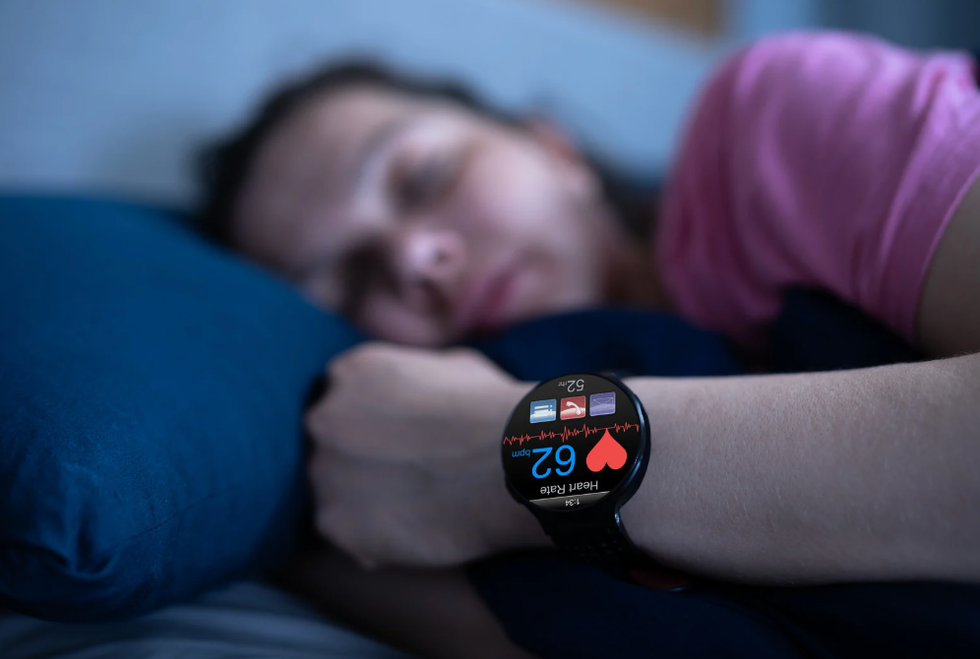Every evening, when it’s time to kick back after a busy day seeing patients, pain management physician Daniel Cartledge of Delray Beach, Florida, relaxes in a comfortable club chair and turns on his NERVANA, a device with earbuds that’s both a music player and a transcutaneous vagal nerve stimulator. More plainly, the earbuds send gentle electrical pulses, synced with the listener’s playlist of choice, through the ear to one of the most critical regulatory nerves in the body.
For Cartledge, using the NERVANA “takes away the background noise in my brain,” he says. “I feel relaxed and focused.” Along with his heart-surgeon brother, Richard, he developed the NERVANA, available to consumers in 90 countries. Cartledge’s invention is just one of a new wave of vagus nerve stimulators currently being studied or already in use, offering a variety of applications across a diverse range of ailments, from autoimmune diseases and depression to epilepsy and digestive disorders like Crohn’s.
Vagus in Latin means wandering, and that’s exactly what the vagus nerve does as it passes through the major organs. Originating in the brain stem and extending all the way down to the colon, the nerve regulates many important bodily functions. As part of the parasympathetic nervous system, often referred to as the “rest and digest system,” it can calm you down, and is responsible for that pleasant feeling of satiety and sedation after eating. It also helps regulate heart rhythm.
[quote position="left" is_quote="true"]Our nerves speak an electrical language, and they use that language to talk directly to cells.[/quote]
Vagus nerve stimulation (VNS) has been associated with many benefits, such as improved memory, immune function, sleep, and mood, as well as higher levels of growth hormone. VNS may also help tame inflammation, allergic responses, and tension headaches. There are over 30 clinical trials underway on the vagus nerve, many of which are testing for the success or failure of noninvasive stimulation gadgets like the NERVANA.
Here, a quick review of bioelectronics with great promise for several chronic conditions:
Rheumatoid Arthritis
An implantable device that stimulates the vagus nerve has been shown to improve rheumatoid arthritis, a painful autoimmune disease in which inflammation damages joints. Powerful medications can help tame the disabling pain and swelling of rheumatoid arthritis, often by quelling the production of an inflammatory molecule called TNF (tumor necrosis factor). In a 2016 study of 17 patients, a stimulation device was implanted and then activated and deactivated on a set schedule for 84 days. Several patients that had failed to respond to multiple medications had a strong response to the vagus nerve stimulator. TNF production was significantly inhibited, and no serious side effects were noted.
“This is more than a vagus nerve story, more than a TNF story, and even more than a rheumatoid arthritis story,” says one of the study’s authors, Kevin Tracey, M.D. of the Feinstein Institute for Medical Research in Long Island. “The big story here is that you can start with a molecular target such as TNF, and rather than screening or devising drugs to reduce it, you can target that molecule by using an electronic device.”
One might wonder, how does a device that stimulates a nerve manage to treat an autoimmune disease? Tracey points out that our nervous system has evolved to coordinate information from all the body’s cells in order to regulate them and keep them healthy. “Our nerves speak an electrical language, and they use that language to talk directly to cells,” he says.
The study needs to be repeated in a large group of patients in order to definitively prove its efficacy and ensure its safety, but Tracey believes that similar devices may eventually be used in a range of diseases involving inflammation—from hypertension to diabetes to inflammatory bowel disease.
Epilepsy, Depression, and Pain
An implantable device that stimulates the nerve has been shown to help prevent or reduce epileptic seizures, reduced by up to 40 percent, allowing patients to reduce their medication dosages. Surgically implanted devices last up to 10 years, though a new noninvasive device—the wearable ear electrode NEMOS—has been approved in Germany, Austria, and Italy for treating epilepsy, depression, and pain. Like NERVANA, NEMOS stimulates the vagus nerve through the ear, where a branch of the nerve surfaces in front of the ear canals.
In one study of 48 volunteers, which was double-blind placebo using either a sham device or NEMOS, active treatment reduced deep tissue pain as well as the perception of pain from mechanical stimulation. In another study of 10 epileptic patients with seizures that were not responsive to medication, vagus nerve stimulation for nine months reduced frequency of seizures in five patients. Major depressive disorder has also proven responsive; a study from Harvard Medical School and the China Academy of Chinese Medical Sciences found that patients who received real vagus nerve stimulation via an ear electrode showed significant improvement in depression, while those who received sham treatment did not improve.
Migraines
More than 28 million Americans suffer from migraine headaches, and nearly three-quarters of those are women. A double-blind placebo clinical trial of a vagus nerve stimulator called NET-1 demonstrated significant reduction in the frequency and intensity of migraines. Two subsequent three-month studies also showed significant improvement. Other studies on migraine and vagus nerve stimulation also demonstrated improvement. The device has since been improved and modified and is now called NET-1000. Both the NET-1000 and a NET-3000 device are available in the United States without any attached medical claims of safety or efficacy. A different version, the NET-2000, has received FDA approval as a Class III device by prescription only for indications of depression, anxiety, and insomnia.
[quote position="full" is_quote="true"]Rather than devising drugs to resolve a medical issue, you can use an electronic device.[/quote]
“There has been over thirty years of research on vagal nerve stimulation,” says Cartledge. And though his device makes no medical claims, and Cartledge does not use the NERVANA when treating his pain patients, he has been impressed with the effectiveness of “ear electroacupuncture” in his fibromyalgia patients. It turns out that some ancient ear acupuncture points, demonstrated to be effective for pain and constipation, overlap with the vagus nerve’s path. So we’ve been stimulating the vagus nerve without actually naming it for centuries—often without the help of a device.
Another gadget-free method for vagus nerve stimulation involves meditation: A 2013 study found that vagus function increased with a regular meditation practice. Study participants were randomly assigned to either a group that generated positive emotions via loving-kindness meditation or to a control group that did not meditate. Those who repeated silent phrases such as “May you feel safe, may you feel happy, may you feel healthy, may you live with ease” experienced a surge in vagal tone, as well as improvements to health throughout the body.















 Big Brain GIF by Jay Sprogell
Big Brain GIF by Jay Sprogell
 Shake It Off Wet Dog GIF by BuzzFeed
Shake It Off Wet Dog GIF by BuzzFeed
 Working out with friends also makes exercise more enjoyable (and feel quicker).Photo credit: Canva
Working out with friends also makes exercise more enjoyable (and feel quicker).Photo credit: Canva
 People with Imposter Syndrome can't accept their achievements.
Photo by
People with Imposter Syndrome can't accept their achievements.
Photo by  Emotion Feeling GIF by Quilt
Emotion Feeling GIF by Quilt Psychologist - Free of Charge Creative Commons Notepad 1 image
Psychologist - Free of Charge Creative Commons Notepad 1 image
 Human anatomy model.
Photo by
Human anatomy model.
Photo by 
 Socks warm your feet, but cool your core body temperature.Photo credit: Canva
Socks warm your feet, but cool your core body temperature.Photo credit: Canva
 A new t-shirt could open up more hospital beds for patients.Photo credit: Canva
A new t-shirt could open up more hospital beds for patients.Photo credit: Canva Wearable solutions could be revolutionary.Photo credit: Canva
Wearable solutions could be revolutionary.Photo credit: Canva Many wearable tech devices could help you monitor your health.Photo credit: Canva
Many wearable tech devices could help you monitor your health.Photo credit: Canva